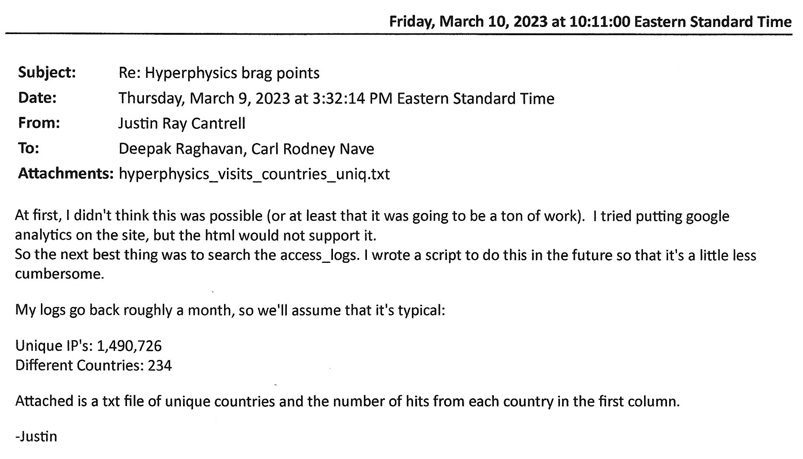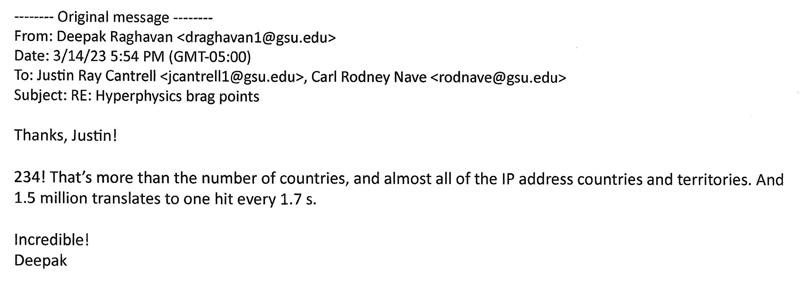Article About HyperPhysics in Physics Today
February 7, 2023

Sarah Wild's article about HyperPhysics was published in the online version of the journal Physics Today on February 7.
My first information about the plan for this article was on December 16, 2022 when Sarah contacted me with the information that she had been commissioned to do it for Physics Today and wanted to schedule an interview with me. We had contact over the Christmas period and finally had about a 45 minute online sesson on January 9.
 | The HyperPhysics home page has the same look and presents the same 10 broad physics topics as it did a quarter century ago. It's the entry point to hundreds of articles on specific subjects, from absorption to the Zeeman effect. Credit: � 2016 C. R. Nave |
We had a number of exchanges of information in the weeks before the publication and I pointed her to the online information about my presentation to the Southeastern Section of the American Physical Society (SESAPS) and another description of the development of HyperPhysics. I appreciated Sarah's thorough work on the article. Sarah was educated in South Africa and has produced two award-winning books there. A sample of her work may be found in LiveScience.
One question that I was not able to answer for Sarah was the rate of access of HyperPhysics. I had gotten a rough idea back before 2016 when it was on my computer as the server. But since 2016 when it was placed on a GSU server, I didn't have that access. With the publication of the article there was more interest in that rate of use, and Justin Cantrell was able to develop a way to get that data.


One of the difficulties about assessing the rate of use of HyperPhysics was the fact that a single user could quickly access a large number of documents since some documents have a large number of formulae, each of which counts as a document. But Justin counted the number of distinct IP addresses that were connecting. So this is almost a million and a half distinct users in a month, about one every 1.7 seconds as Deepak points out. And 234 countries certainly suggests that it is being accessed by the entire world! According to the website Worldometer, there are only 195 countries in the world, so we don't know how we could come up with 234!
The first person I heard from who had seen the article was Ron Jones, who picked is up in a couple of days. Heard from Jim Purcell on Mar 21. Heard from many of my old colleagues at GSU.
| Celebration of HyperPhysics and the PandA podcast |
| Jeff and family visit for Mardi Gras and fence construction |
2023